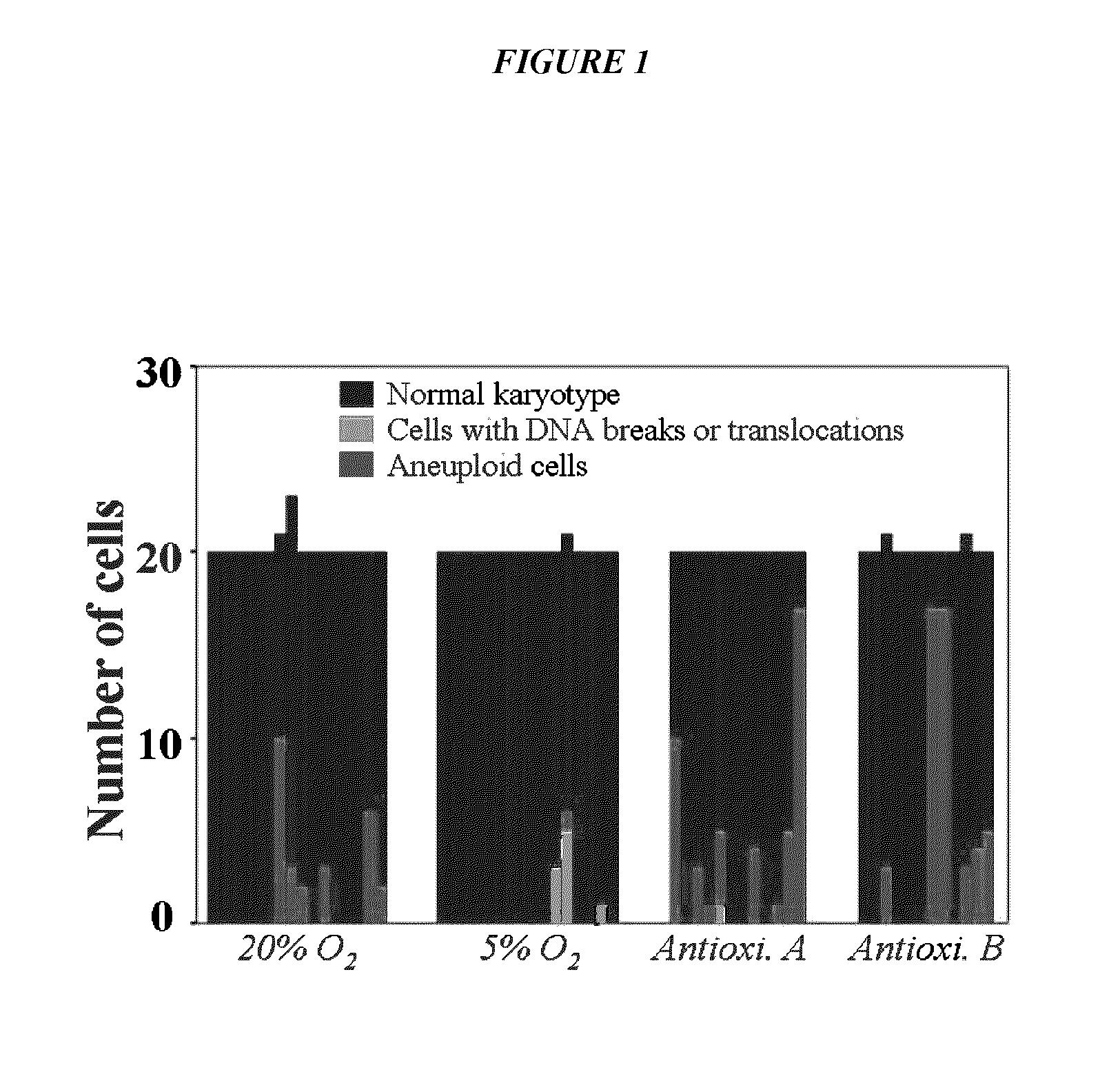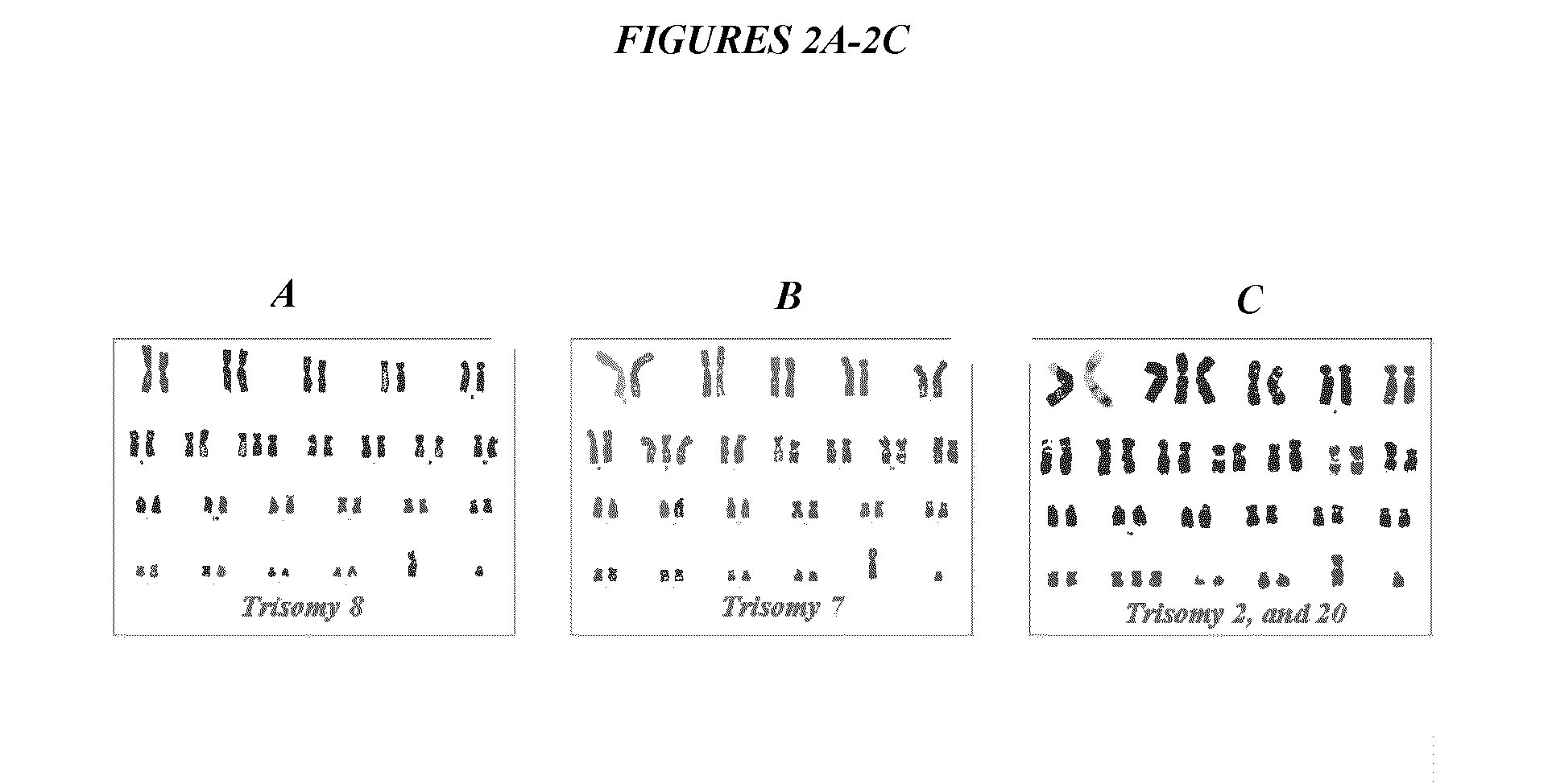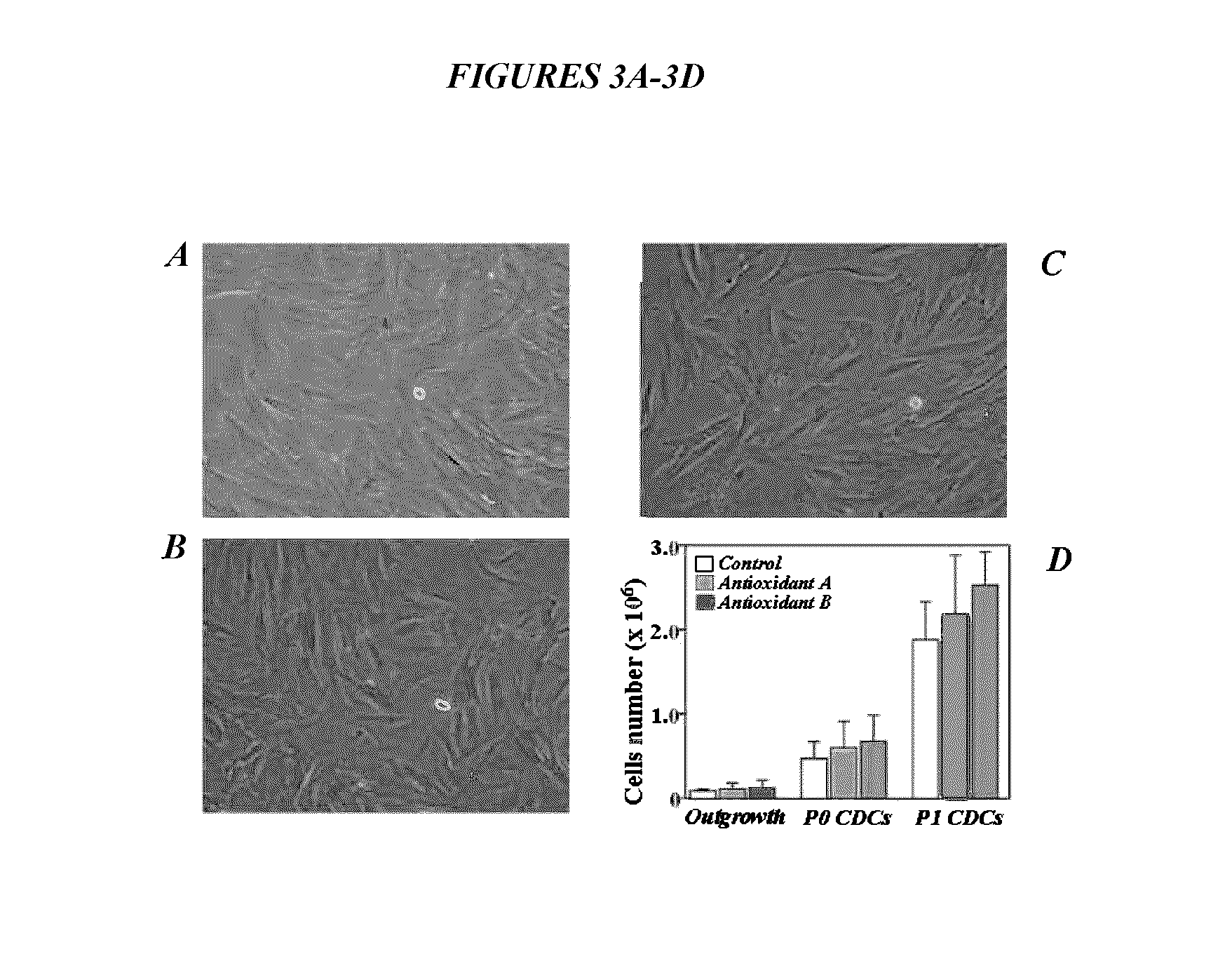Methods and compositions for maintaining genomic stability in cultured stem cells
- Summary
- Abstract
- Description
- Claims
- Application Information
AI Technical Summary
Benefits of technology
Problems solved by technology
Method used
Image
Examples
example 1
Genomic Alterations Decrease in Physiological Oxygen but Unexpectedly Increase with Antioxidant Supplements
[0122]Source human heart biopsies (n=16) were divided and processed in parallel in the various culture conditions, facilitating direct comparisons. CDCs grown under conventional conditions not infrequently included cells with genomic alterations (6 of 16 samples; FIG. 1, Table 1 and Table 2). In reference to FIG. 1, each bar represents a histogram of one sample of stem cells; blue denotes cells with a normal karyotype. Compared with culture in traditional 20% O2 incubator (95% room air / 5% CO2), the number of cells with DNA breaks or translocations (colored green) and losses or gains of chromosomes (red) was decreased when cells were cultured in 5% O2 (p=0.007). When CDCs were cultured in 5% O2, genomic alterations were detected in only 3 of 16 samples (FIG. 1, Table 2). The genomic changes were relatively innocuous: one sample contained one cell with a balanced translocation, a...
example 2
Antioxidants Decrease Intracellular ROS Monotonically but DNA Damage Shows a Biphasic Response in Stem Cells
[0127]CDCs were initially maintained in traditional 5% CO2 / 20% O2 culture condition and then seeded into 96-well plates and cultured for 24 hours under experimental conditions. Intracellular ROS levels in CDCs exposed for 24 hours to a wide range of antioxidant concentrations (A-B), with catalase (a pure ROS scavenger, C) and hydrogen peroxide (H2O2, a powerful oxidant, D) as controls were measured. The results shown in FIG. 5 are means±Std. Dev. for six separate experiments using different twice-passaged CDCs. (a.u.: arbitrary units. * p<0.01, \ p<0.05 vs. the baseline levels., represented by “0” on the x-axis). The results shown in FIG. 6 are representative histograms of the intracellular ROS data obtained by flow cytometry
[0128]Catalase decreased, and H2O2 increased, ROS levels in a progressive dose-dependent manner (FIG. 5C-D, FIG. 6C-D). Like catalase, antioxidants A and ...
example 3
Extreme Suppression of Intracellular ROS Down-Regulates Atm and Other DNA Repair Factors
[0133]The protein kinase ATM (ataxia-telangiectasia mutated), is believed to play a role in DNA repair. Intracellular ROS enhances the expression of ATM, which phosphorylates a host of downstream targets in response to DNA double-strand breaks, inducing cell cycle arrest and inhibiting apoptosis. It is possible that excessive suppression of ROS levels might down-regulate ATM, thereby promoting genomic instability. ATM protein levels were indeed decreased at high concentrations of antioxidants A and B (≧1000-fold dilution, (≧100 μM, respectively), or catalase (≧100 units / ml) (FIG. 10A-C). As shown in Panel A, the protein levels of ATM in CDCs were decreased at high doses (≦1000-fold dilution), but not at low doses (≧10.000-fold dilution) of antioxidant supplements (Antioxidant A). Panel B shows that ATM protein in CDCs decreases at ≧100 μM, but not at ≦10 μM, of custom antioxidant cocktail (Antiox...
PUM
 Login to View More
Login to View More Abstract
Description
Claims
Application Information
 Login to View More
Login to View More - R&D
- Intellectual Property
- Life Sciences
- Materials
- Tech Scout
- Unparalleled Data Quality
- Higher Quality Content
- 60% Fewer Hallucinations
Browse by: Latest US Patents, China's latest patents, Technical Efficacy Thesaurus, Application Domain, Technology Topic, Popular Technical Reports.
© 2025 PatSnap. All rights reserved.Legal|Privacy policy|Modern Slavery Act Transparency Statement|Sitemap|About US| Contact US: help@patsnap.com



